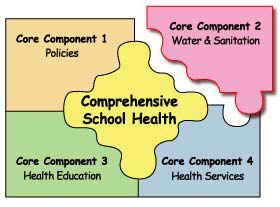
Published in: 2004
Publisher:
United Nations Educational, Scientific and Cultural Organization (UNESCO)
Author:
UNESCO
Uploaded by:
SuSanA secretariat
Partner profile:
common upload
5436 Views
113 Downloads
Content - Summary
This tool is part of an online tool set that has been provided by an interagency-initiative for Focusing Resources on Effective School Health, called FRESH. A series of Good Practice Guides has been prepared to provide members of the Interagency Network for Education in Emergencies (INEE) with access to focused information related to education in emergency situations.
The tool was developed to assist project officers and others involved in WFP-funded school feeding projects, this manual contains practical information on the design, implementation and evaluation of such programmes that anyone planning or currently running a school feeding programme can use. It includes sections describing the rationale for and expected benefits of school feeding; implementation issues related to health and nutrition, ration composition, food safety, water supply and sanitation and deworming interventions; and the fundamentals of monitoring and evaluating the results of programme activities. A variety of model checklists and reporting forms are also found in this publication.
The information in this tool was adapted by UNESCO from the following publication: WFP, UNESCO and WHO 1999. School Feeding Handbook. Rome, World Food Programme.
This information supports the Core Component #2 of the FRESH framework for effective school health: water, sanitation & the environment. It will have a greater impact if it is reinforced by activities in the other three components of the framework being #1 Policies, #3 Health Education and #4 Health Services.
Bibliographic information
UNESCO (2004). Guidelines for the provision of safe water and sanitation facilities in schools. United Nations Educational, Scientific and Cultural Organization (UNESCO)
Filter tags
English Guidelines and manuals Schools















